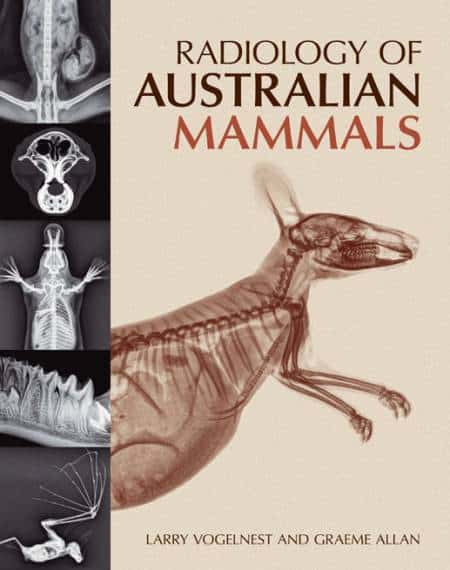Radiology of Australian Mammals. This text has been compiled to fill a void in the current literature. We recall on many occasions, while interpreting radiographs of various Australian mammals, saying ‘We need to do a text on the normal radio anatomy of Australian mammals’. We have acted on it and produced Radiology of Australian Mammals.
Radiology of Australian Mammals

The recognition, diagnosis and treatment of injury and disease in wildlife species present unique challenges for the veterinarian. This is particularly true for many species of Australian native mammals. Many are cryptic in nature and frequently mask their clinical signs when injured or suffering from disease – the ‘preservation response’. When animals can no longer compensate and appear clinically affected, the effects of their injuries or diseases are advanced and efforts to treat these animals are often fruitless. Veterinarians dealing with wildlife must draw on all their skills and powers of observation to recognise the signs of injury and disease. In the majority of cases, further examination and diagnostic workup will be required to confirm a diagnosis. As with domestic species, a suite of diagnostic modalities can be used to further define the nature and extent of injury or disease, guide therapeutic decisions and determine prognosis. Radiology is a fundamental diagnostic modality that is generally readily available and, with the advent of digital radiology, provides high-quality images that can be viewed almost instantly. These can also be easily electronically transferred for referral to a specialist wildlife veterinarian or radiologist for interpretation and opinion if required.
Two important aspects of radiology are the recognition and description of abnormal findings and the interpretation of these findings. In order to recognise abnormalities, knowledge of normal radioanatomy is required. This is particularly challenging with wildlife because of the frequent lack of familiarity with a species and anatomic descriptions, and because radiographic images of normal animals are not readily available for comparison. A further challenge is the variation in anatomy among the different wildlife species; in some instances, even those within the same taxonomic group. One option that can increase one’s confidence in distinguishing normal from abnormal is consultation of reference sources on normal radioanatomy. This, until now, has not been available for Australian mammals. Radiology of Australian Mammals is the first comprehensive resource on the normal radioanatomy of Australian mammals.
RAR File Password: pdflibrary.net
Password: pdflibrary.net
